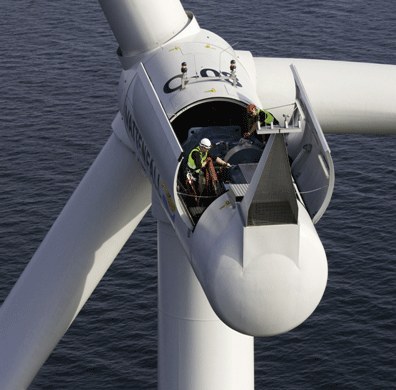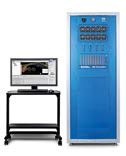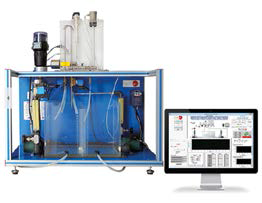“The modular architecture allows us to make a scalable system to meet the ever-increasing requirements of rapidly evolving wind power technology.”
The challenge
Improve automated testing of frequent software releases of Siemens turbine control systems, as well as test and verify turbine control system components in the development phase.
The solution
Create a new real-time test system for hardware-in-the-loop (HIL) testing of new embedded control software releases for wind turbine control systems using NI TestStand, LabVIEW Real-Time, the FPGA modules and the PXI platform.
Testing the Software Control System
A wind turbine system consists of various components including the rotor, gear, converter, and transformer used to convert the kinetic energy of the wind into electricity.
The control system interfaces with these components through hundreds of I/O signals and multiple communication protocols. The most complex part of the control system is for the embedded control software to execute the control cycles.
Since our software developers regularly release a new software version for the controller, we need to test the software to verify that the releases will perform reliably under wind farm conditions. With every software release we perform factory acceptance testing before the software can be used in the field. This new testing system gives us the ability to automate the process.
Lessons Learned from the Previous System
Our previous test system was developed 10 years ago, based on another software environment and PCI data acquisition cards. The test and performance system architecture did not meet our test time and scalability requirements. It was difficult to maintain and did not have enough automation capabilities for efficient testing. It also lacked automatic documentation of results, test case traceability, and did not provide the required remote control capabilities. Additionally, the old HIL test environment did not support multi-core processing, which limited us from taking advantage of the computational power of the latest multi-core processors.
Our Decision for Future Systems
After evaluating available technologies, we selected LabVIEW software, real-time PXI-based, and field-programmable gate array (FPGA) hardware to develop our test solution. We believe this technology gives us the flexibility and expandability to meet our future technical requirements. We have also established trust in the solution with the high level of service and quality of NI products.
Since we did not have in-depth experience in developing in-house test systems, we contracted CIM Industrial Systems A/S in Denmark for the development. We chose CIM Industrial Systems A/S because they have the test engineering capability and the largest number of Certified LabVIEW Architects in Europe. CIM made this project a success, we are very satisfied with the service received.
Flexible Real Time Test System Architecture
The new system simulates the behavior of a real-time turbine, running simulation models for these components in a LabVIEW Real-Time system to provide simulated signals to the system under test.
The host computer has an intuitive LabVIEW GUI that users can use to easily adapt by moving components onto the panel. The Windows OS application also communicates with two external instruments that were not supported in real time. The software on the host computer communicates with the LabVIEW Real Time target in a PXI-1042Q chassis via Ethernet. LabVIEW Real Time runs simulation software that typically consists of 20 to 25 simulation DLLs running in parallel. This solution can call user models built with almost any modeling environment such as the NI LabVIEW Control Design and Simulation Module, The MathWorks, Inc. Simulink® software, or ANSI C code. The typical execution range for our simulation loop is of 24 ms, leaving ample processing capacity to meet future expansion needs.
FPGA Boards for Custom Protocols for Wind Turbines and Sensor Simulation
There are many custom communication protocols used in wind turbines due to the lack of existing standards. Using the NI PXI-7833R FPGA-based multifunction module along with the LabVIEW FPGA module, we were able to interface and simulate these protocols. Apart from making the protocol interface, we are using the device to simulate the magnetic sensors and to accurately simulate three-phase current and voltage.
The other FPGA card is connected to an NI 9151 R-series expansion chassis to increase the number of channels in the future.
The Benefits of the New Test System
The new test system from Siemens Wind Energy has many benefits over previous generation solutions. This is due to its modularity, which is easy to improve, adapt and develop in the future. The system under test can be easily replaced without any changes to the architecture of the test system. The remote control capability and easy replication of the system gives us the flexibility to copy the system to other facilities as our operations grow.
The simulator provides an environment that allows to effectively verify the new releases of test software and special test situations in our laboratory. It also gives us the tool to test the new technologies and concepts we are working on.
Future plans
The modular architecture allows us to make a scalable system to meet the ever-increasing requirements of rapidly evolving wind power technology.
Our vision is to split the simulation to multiple LabVIEW Real-Time targets to meet our future testing needs. We are also going to use NI TestStand to further automate the execution.







